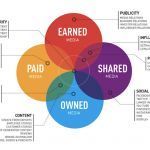Online PR: The Big Three

As the fields of public relations, social media and marketing becoming more integrated, the practice of online PR is becoming increasingly important in order to stand out on multiple platforms.
In addition to exposure, a PR campaign now has the ability to dramatically affect search engine optimisation as well as social following. With the prospect of such large-scale returns on investment it does make it a worthwhile opportunity, although success relies on a clearly-defined strategy.
Trend Related
Utilising current events to attract the public attention, trend-related PR is a great way to use the environment around you to drive consumer awareness. Although it can sometimes be hit and miss, it’s worth taking the risk when the results can be widespread PR across all types of media.
Example – During the FIFA 2014 World Cup, betting provider Paddy Power opted for controversy by creating the illusion that they had bulldozed a motivational message into the Brazilian rain forest.
With environmental activists leading the way, a barrage of sharing began on social media with global news coverage closely following behind. Only when they had achieved widespread brand awareness did they choose to reveal it was actually a hoax, created graphically on Photoshop by one of their designers.
Cause Related
Sometimes referred to as positive PR, cause related PR refers to getting involved with society and creating a positive difference by creating awareness, fundraising or offering support to ethical organisations. By supporting an issue which your audience has a vested interest in, you can not only have a positive effect on society but drive brand awareness too.
Example – Focusing on the education of children and road safety, Wynsors recently took a creative approach and launched a range of shoes in which a percentage of the profits would be contributed to UK road safety charity Brake. In addition, they also created an engaging interactive game for children to educate the children on the do’s and don’ts of road safety.
Trend Setting
Possibly the most difficult type of PR, trend setting can reap massive rewards and involves creating something proactive to capture the public’s attention. Whether it’s releasing a new product, conducting a new study or a creative content campaign, it can be daunting stepping out into unchartered waters but the rewards can be invaluable.
Example – The phrase ‘like a girl’ had always carried a slightly negative connotation but toiletry brand Always set out to change that with the #likeagirl campaign. Empowering girls through a creative video, they asked a variety of children and adults what it meant to throw #likeagirl. The results were inspirational and lead to widespread media attention, which shows how well one thought-out piece of content can drive public relations.
The Peso Model: Paid, earned, shared and owned media.
Once you’ve got a solid idea for a campaign, it’s worth exploring and setting objectives for the type of coverage you’re aiming for. The ideal approach to PR should take into consideration all four types of media, and assess the opportunities for them to integrate with each other.
(Image Credit: Matt Camp)
Paid – Commonly known as advertising, this is media space that you pay for in print, radio, television, search engines or social network. Although some forms are inexpensive, paid print media usually comes at a high cost and return on investment can be hard to measure.
Earned – Usually the main target for public relations, this is media attention that you have earned by doing something of interest to the public. As the message is spread by a third party, it can often come across in a more credible and reliable way.
Owned – Everyone knows that content is king, and with the rise of content marketing more businesses are opting to create their own. Branded articles, webinars, white papers, infographics and videos are great ways to get your message across, monitor response and engage your audience by creating value.
Shared – A social media campaign gone viral can radically change the success of a brand, which has led social networks into a league of their own. With the Google Panda update, search engines are also taking into consideration how much a piece of content is shared to judge how useful it is to the user.
As the different types of media become more closely entwined it seems that digital marketing campaigns are beginning to reflect that. It’s now become the job of marketers to build campaigns that not only get coverage on one type of media, but instead take a multi-media approach.
[image error]





